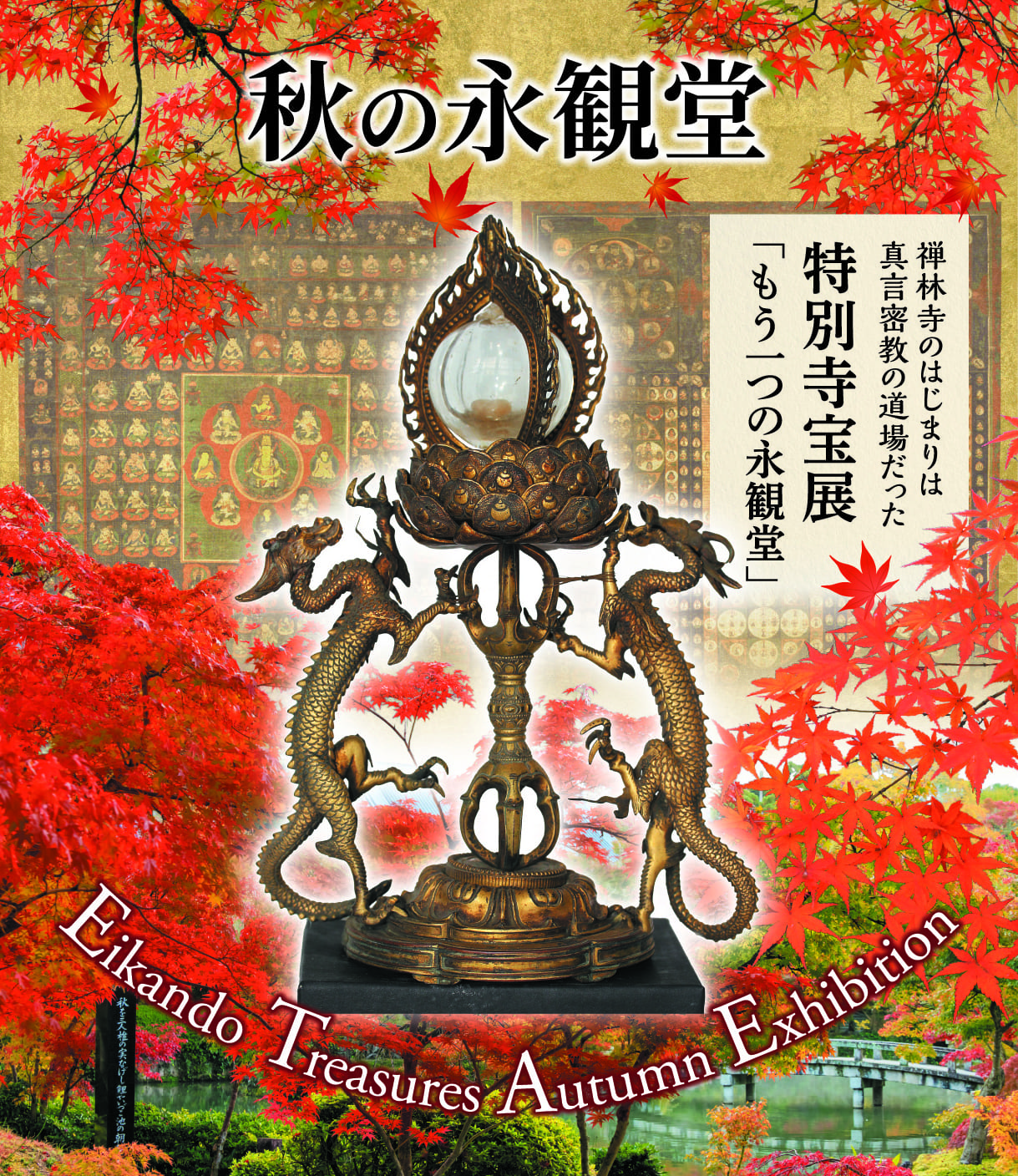


Eikando Zenrin-ji, a Jodo-shu temple now famous for its maple trees, began its history as a dojo (training hall) for Shingon Esoteric Buddhism around 1,200 years ago, at the start of the Heian period.
It later transitioned into a Jodo-shu temple during the Kamakura period. This history explains why this temple possesses many works of Esoteric Buddhist art, which is unusual for a Jodo-shu temple.
Interestingly, however, many of these works were created during the medieval era or the Kamakura period and later, when the temple was supposed to be a Jodo-shu institution, according to its records.
Recent findings suggest that Zenrin-ji continued as an Esoteric Buddhist temple until around the end of the Muromachi period.
Against this backdrop, this year’s Eikando Treasures Autumn Exhibition will primarily showcase the Esoteric Buddhist art preserved at Zenrin-ji, offering another aspect of Eikando—Zenrin-ji as an Esoteric Buddhist temple, distinct from the Jodo-shu temple that Eikando is known for today.
We would like to introduce some of the cultural treasures that will be on display at the Exhibition.
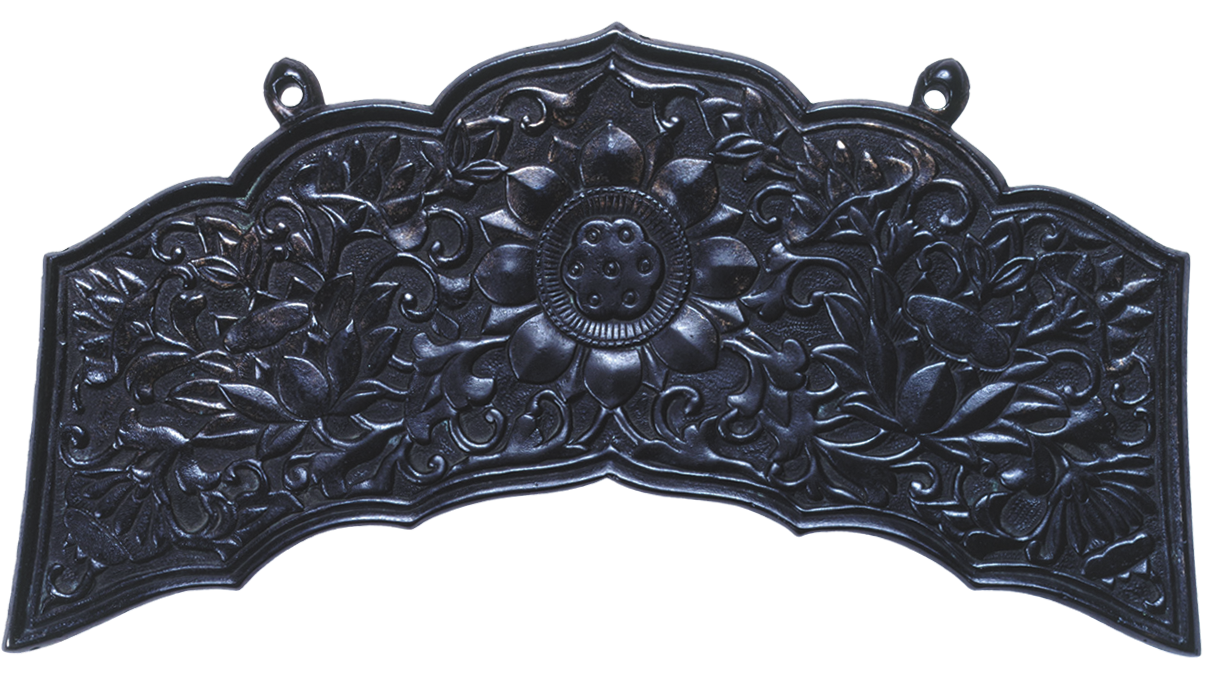

Kondo Rengemon Kei
(Gilt Bronze Buddhist Ritual Gong with Lotus Flower Design) 〈Heian Period〉
A kei is a Buddhist ritual instrument derived from an ancient Chinese musical instrument. This piece beautifully represents the characteristics of a late Heian period kei, with a refined design condensed onto a limited surface and a magnificent three-dimensional expression.
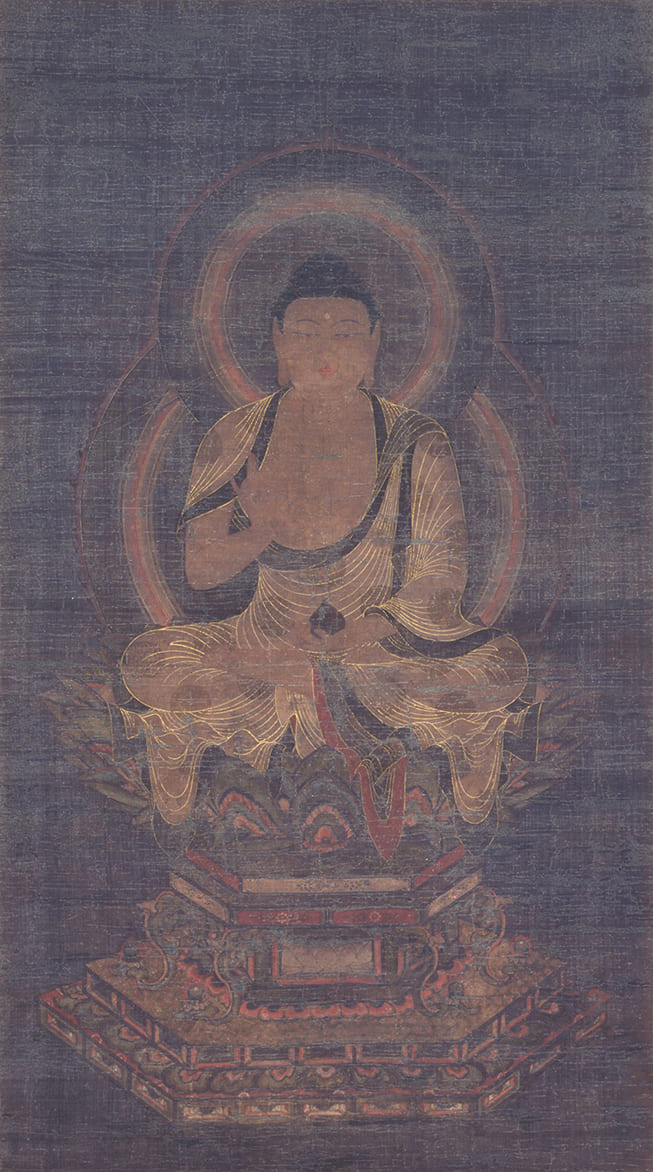
Painting of Yakushi Nyorai
(Healing Buddha) 〈Kamakura Period〉
The skillful use of color and draped robes drawn with gold paint expertly expresses a supple texture. Fewer painted images of Yakushi Nyorai survive compared to sculptures, making this a valuable work dating back to the mid-Kamakura period or earlier.
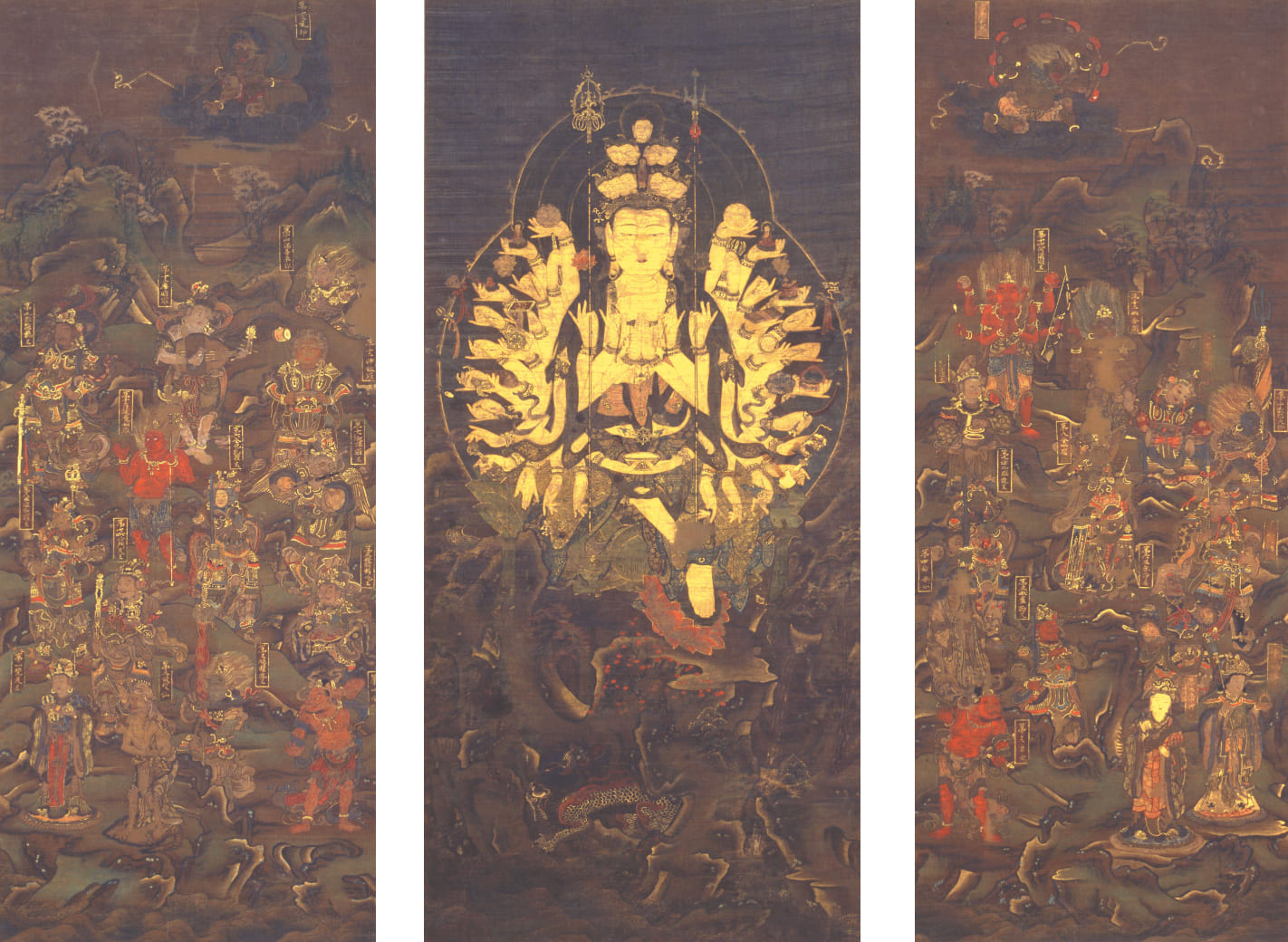
Painting of the Senju Kannon and the 28 Attendants 〈Nanboku-cho Period〉
This set consists of three hanging scrolls. The center scroll portrays Senju Kannon (Thousand-Armed Kannon), seated in a rare posture with one leg pendent, residing on Mount Potalaka. The two flanking scrolls depict a retinue of the twenty-eight guardian deities, along with wind and thunder gods. Differences in dimensions suggest they may not have originally been part of a single set, but they were all created in the early 14th century.
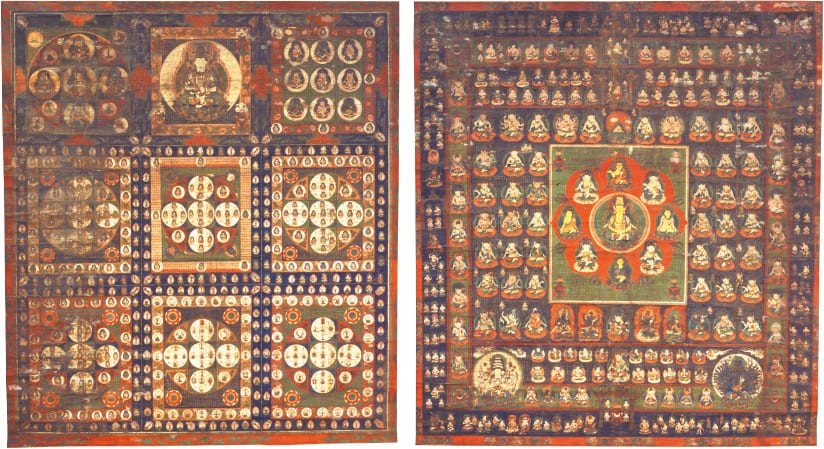
Ryokai Mandala
(Mandala of the Two Realms) 〈Muromachi Period〉
The Ryokai Mandala is a fundamental art form of Esoteric Buddhism. This work dates back to the Muromachi period and is an excellent example of a mandala from this era, notable for its use of gold leaf and kirigane (cut-gold) techniques. It follows the composition of the “Genzu Mandala” brought to Japan by Kukai (774–835).
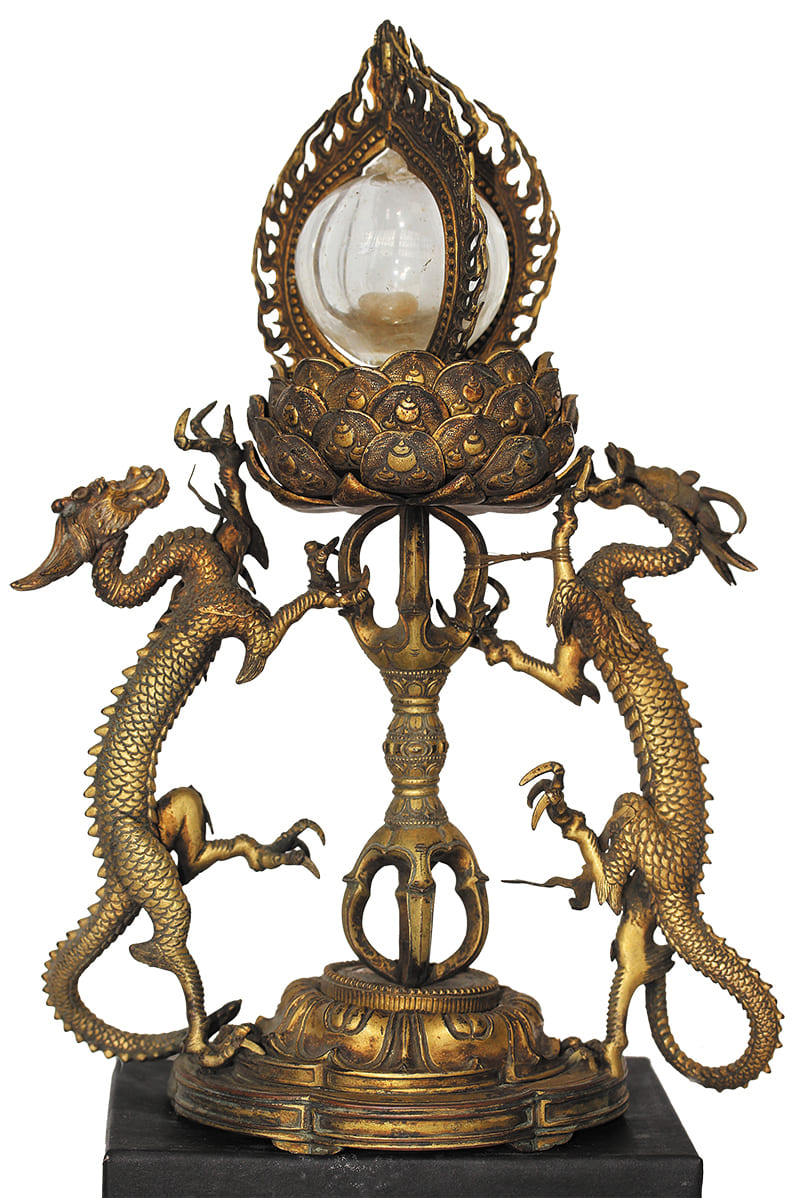
Mikkan Hoju-gata Shari Youki
(Container of Buddha’s Relics)〈Late Kamakura Period – Nanboku-cho Period〉
This is a reliquary with a strikingly impressive form. Its highly unique design features an upright vajra pestle as the stem, topped with a lotus pedestal, upon which hoju (container for Buddha’s bones) is placed. It is a rare work, with only a few such pieces held even by Shingon temples.
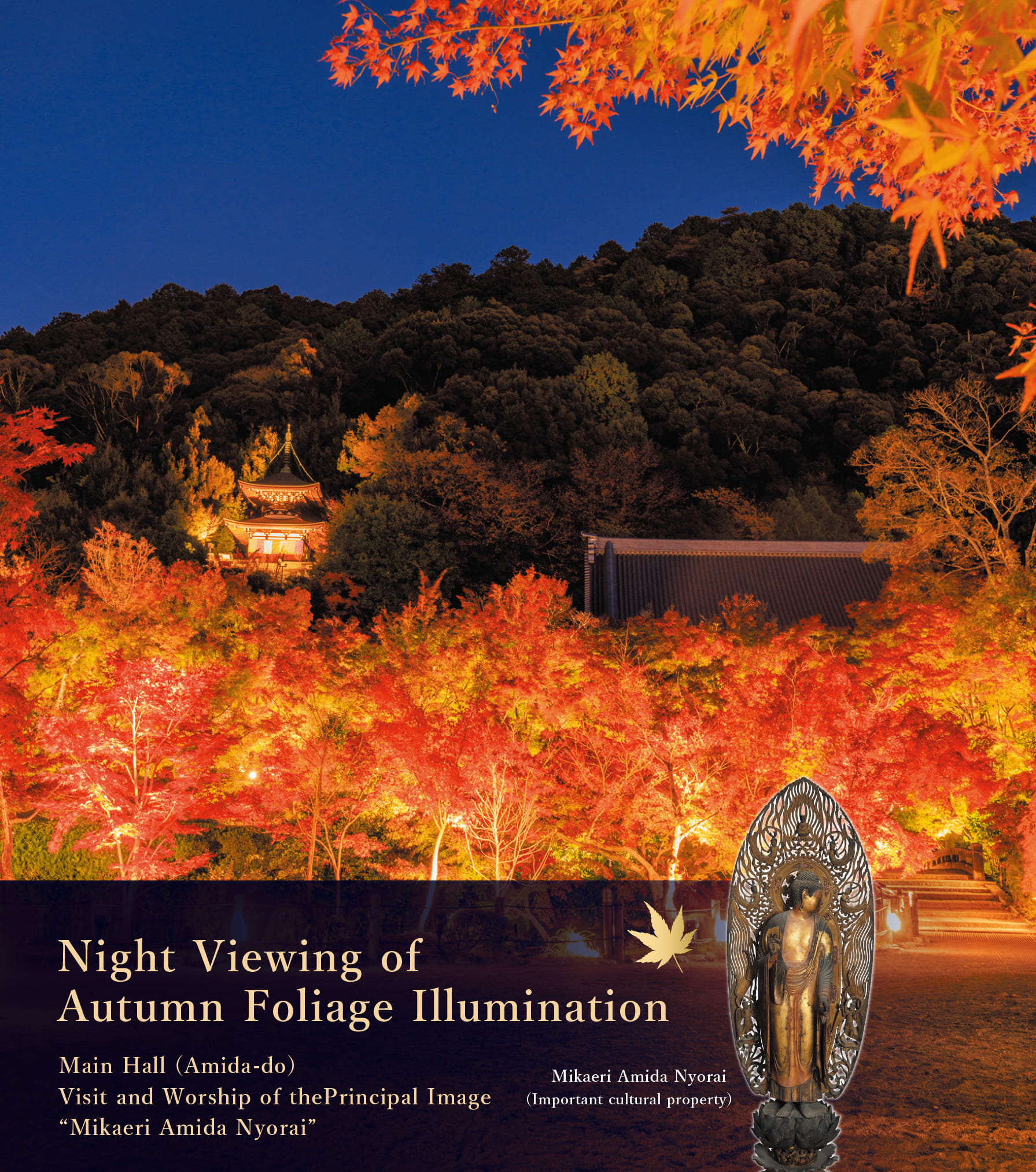

Access
Eikando Zenrin-jiGoogle Map
| JR/Kintetsu | From "Kyoto" Station, take City Bus No. 5 to "Nanzenji-Eikando-michi," then walk 3 minutes. |
|---|---|
| Keihan Railway |
From "Sanjo" Station, take City Bus No. 5 to "Nanzenji-Eikando-michi," then walk 3 minutes. From "Jingu-Marutamachi" Station, take City Bus No. 204 or No. 93 to "Higashi Tenno-cho," then walk 8 minutes. |
| Hankyu Railway | From "Kyoto Kawaramachi" Station, take City Bus No. 5 to "Nanzenji-Eikando-michi," then walk 3 minutes. |
| Subway | Take the Tozai Line, get off at "Keage" Station and walk 15 minutes. |
※Visitors are requested to bring a shoe bag.。 ※Please refrain from visiting by car.
Eikando Web site